-
JOO CHIAT/KATONG FOOD WALK
-
WHERE: From Betel Box Hostel, 200 Joo Chiat Road
FEE: $100 a person
DURATION: Four hours
INFO: betelboxtours.com
Heritage trails in Singapore worth checking out
From food and culture trails to walks about women who shaped history, here are four tours to try
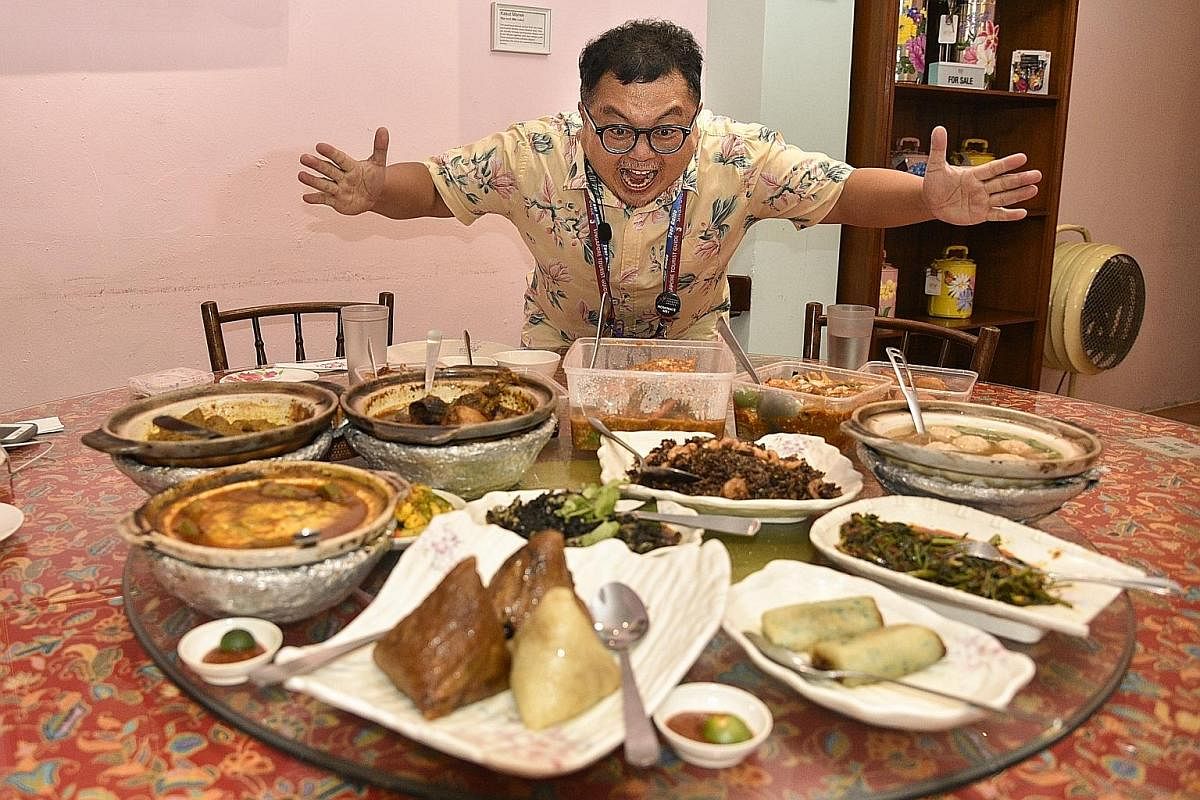
Are you bored of Covid-19 constraints and looking for something novel to do?
What about pounding the streets of Singapore to learn more about our history?
There is a variety of heritage walks and tours available, some of which are free.
You can opt for a knowledgeable guide or explore neighbourhoods on your own.
You may discover, like I did, that objects that have always been there - sitting in corners or standing in plain sight - may have cultural significance.
The massive stone sculpture on the lawn in front of the National Museum of Singapore, for instance, is not only notable for looking like dominoes played by giants. It was made by a woman sculptor, Cultural Medallion recipient Han Sai Por.
I learn about the piece, called 20 Tonnes, from heritage guide May Hui, 66, on a feminist walking trail co-organised by the Singapore Council of Women's Organisations.
There are thematic trails as well, such as those arranged by geographical precincts, or those revolving around our traditional food.
Be warned, though. Old photographs of kampungs, where Housing Board flats now stand, are great for nostalgia. But it takes imagination to see what used to be, with only bare bones in situ. Seeing a modern pre-school on a onceimportant historical site can be a bit of a downer.
This is where a historian raconteur comes into his own.
A guide with a zeal for research can show you how things used to be, just by telling a wonderful story. You can even close your eyes and enter a long-gone world.
Feast on celebration food, Peranakan culture
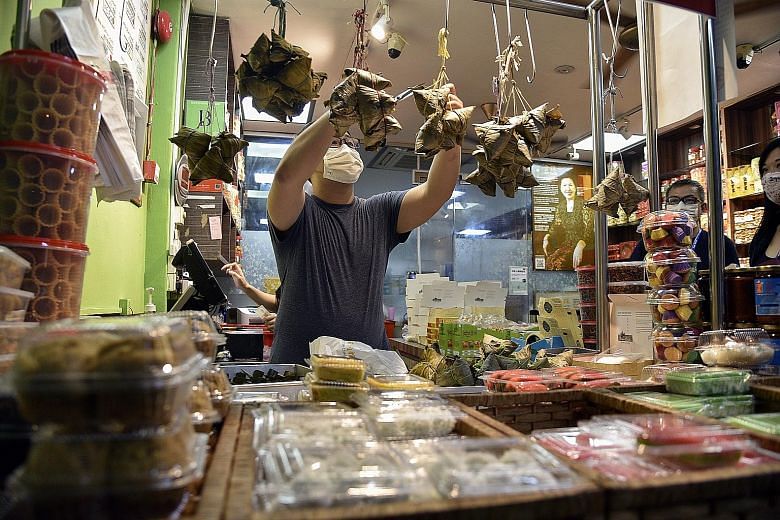
We are looking at about 30 dishes of food with slight apprehension.
Mr Tony Tan, 48, director and guide at Betel Box The Real Singapore Tours, says he has omitted eight types of fruit. But there is no need for soursop and mangosteen, which are familiar to locals, though alien to foreigners who used to form the bulk of his pre-Covid-19 heritage tours.
Mr Tan is hosting five of us Singaporeans on a Joo Chiat/Katong Food Walk, a heritage tour featuring celebration food and Peranakan culture that takes place at night.
As we stroll in Joo Chiat, he picks out goodies from Kim Choo Kueh Chang, a famous Peranakan emporium of rice dumplings, kueh, tidbits, rempah mixes and sweets.
We arrive at Chilli Padi Nonya Restaurant and he sets up camp for us. Dishes from the restaurant sit cheek by jowl with other food he has brought in, along the way.
Food tours provide an immediate sensory hit that make considerations like historical gossip seem far away.
Yes, it is mildly interesting that I am eating XO Hokkien mee from the family of the famed hawker who used to cook wearing long sleeves and a Rolex watch.
But I cannot be distracted from shovelling said noodles into my mouth. They are drenched in an umami-laden stock with a seam of muted fire running through - the chilli a tangy contrast to the voluptuous oysters.
Another dish of chilli crab is satisfying, if straightforward. The crabs are so fresh, they should still be swimming.
I would usually be nodding in appreciation at Mr Tan's discourse about the differences between Peranakan cuisines in Penang, Melaka and Singapore, not to mention the Jawi and Chetti Peranakan families.
Instead, I seize upon his mention of kaffir lime leaves because they make the sotong, cooked in its own black ink, taste light as a cloud.
The traditional Peranakan bakwan kepiting soup is maddeningly fragrant as well.
"What is this? Why is this?" I ask myself silently like a moron, unable to identify the secret ingredients.
The dance goes on and on.
We cram down mouthfuls of ayam buah keluak, topped up with buah keluak fried rice. It is too much of a good thing, but we have sunk into depravity.
Desserts groan on another table. A funky-smelling cempedak paste is sublime, eaten simply on soursoptopped ice.
The silky, opulent gula melaka makes the chendol one of the best I have had. So many kueh, so little time.
The night is over. It is food I am familiar with but, presented all at once, it feels like Christmas and Chinese New Year came together this year.
Follow the tracks of famous women in Singapore
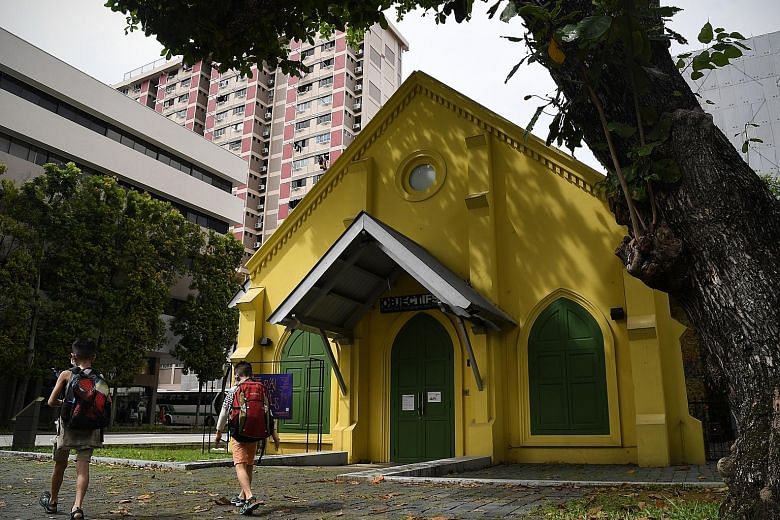
I am walking a heritage trail featuring famous women in Singapore, but the sisterhood seems to be eluding me.
My guide, Ms May Hui, 66, is taking me on Walking In The Footsteps Of Our Foremothers, a walking tour featuring 20 women and the landmarks they are associated with.
It is organised by the Singapore Council of Women's Organisations (SCWO) and the Singapore Women's Hall of Fame. The hall was created by SCWO to honour women of historic significance in Singapore.
We start at the SCWO building in Waterloo Street and head to Objectifs: Centre for Photography and Film, a striking yellow building a few strides away.
In 1887, Australian missionary Sophia Blackmore came to Singapore, where she lived for about 40 years, helping to found schools such as Methodist Girls' School. She went to the church that stood where Objectifs is.
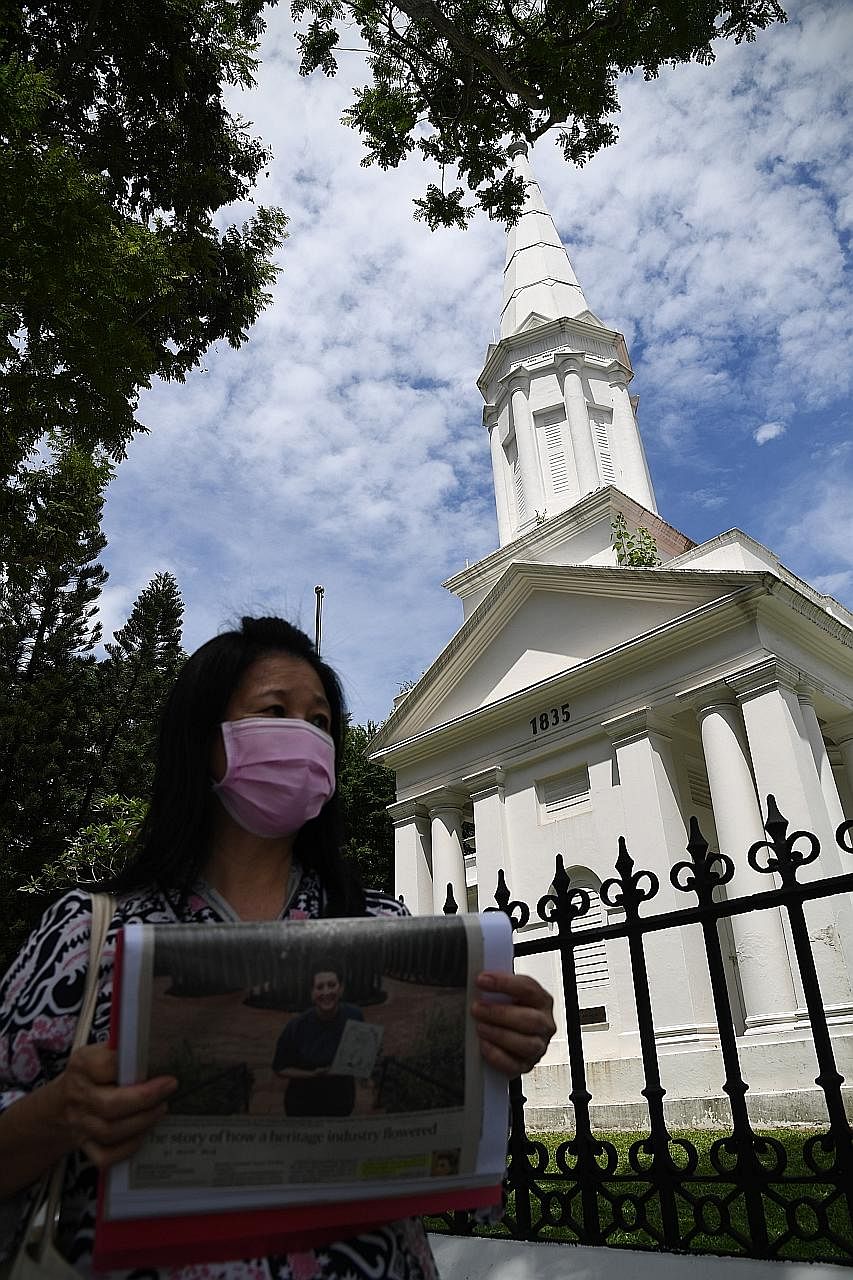
-
WALKING IN THE FOOTSTEPS OF OUR FOREMOTHERS
-
WHERE: From Singapore Council of Women's Organisations, 96 Waterloo Street
FEE: $10 a person
DURATION: 11/2 hours
INFO: facebook.com/theSWHF
The walk also covers areas near the National Museum of Singapore and roads such as Hill Street and Stamford Road.
In war hero Elizabeth Choy's case, for instance, Ms Hui relates how she and her husband were tortured by the Kempeitai, the Japanese military police, at the YMCA building, though they never betrayed the prisoners of war they aided.
While these stories of strength and grit still resonate, the buildings once associated with these women have only tenuous links with them. There is a poignant hollowness.
Yet, a personal connection with recent history makes all the difference.
Ms Hui takes me to the Nanyang Academy of Fine Arts (Nafa) campus in Bencoolen Street.
Visually disabled artist and Cultural Medallion recipient Chng Seok Tin used to study at Nafa. Even though she lost most of her eyesight in 1988, after a surgery to remove a brain abscess, she continued to work in art forms like mixed media and sculpture.
Ms Hui, who knew Ms Chng, recalls how she took the artist to the beach as requested, some time before she died of cancer last year at the age of 73.
Ms Chng had wanted to hear the sound of the sea - a detail that Ms Hui imparts, which makes me want to find out more about the artist.
Ms Hui is also skilled at evoking scenes from the past, using old photos as props, such as ones of the dhobis or Indian washermen who used to wash laundry in a stream near the National Museum.
The tombstone for Agnes Joaquim, who bred Singapore's first orchid hybrid and national flower Vanda Miss Joaquim and died in 1899, still stands at the beautiful Armenian Church. Consecrated in 1836, it is Singapore's oldest Christian church.
By the end of the walk, despite limitations such as a lack of artefacts on a walking trail, my admiration of this historical sorority of women trailblazers burns brighter.
DIY heritage tour of Balestier
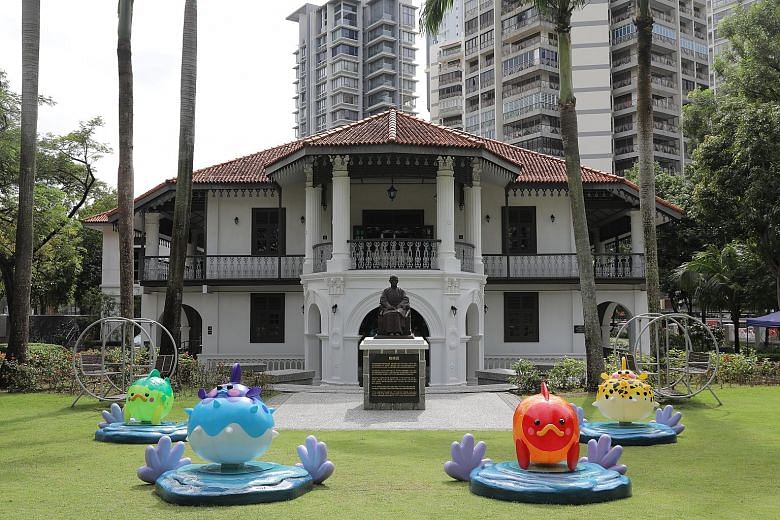
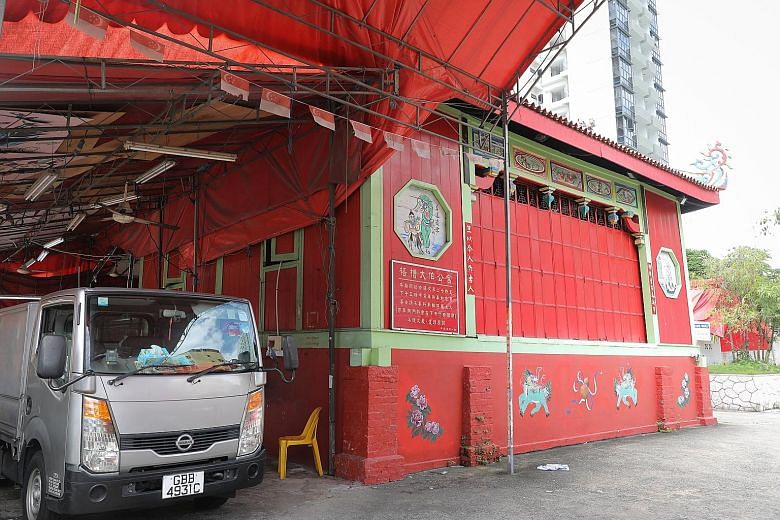
I am exploring Balestier on a DIY heritage trail, one of 19 such trails around Singapore which have been curated by the National Heritage Board (NHB).
It is easy to do - I pick a neighbourhood that sounds fetching from the NHB heritage portal (roots.sg) and download a user-friendly map on my phone.
I know little about Balestier, save that it is a bak kut teh hub and a chicken rice enclave. It is time to be educated beyond matters of the stomach, so I choose the most earnest-sounding route among those available on this heritage trail: Historical Landmarks Of Balestier.
The route begins at Sun Yat Sen Nanyang Memorial Hall, once the South-east Asian headquarters of Dr Sun's revolutionary alliance, the Tong Meng Hui.
This colonial-era villa in Tai Gin Road looks like a boutique hotel, but is really a history geek's dream.
I learn that in his early 20s, Dr Sun made a pact with three friends to overthrow imperial China.
He also won the loyalty of local pioneers like Lee Kong Chian and Tan Kah Kee. Fellow members of the Tong Meng Hui, they built their business and philanthropic empires in Singapore while longing for China to be liberated.
To show his support, Tan even cut off his queue, the long braid of hair synonymous with the Qing dynasty.
Dr Sun, whose bedtime reading included a tome on the French Revolution, became known as the father of modern China, serving as its first provisional president.
The charisma of the man seems to bounce off the walls.
Still, starting the journey with such fireworks is a mistake. In life, as in pop star Beyonce's concerts, opening acts have a purpose. Suffering from its star turn coming on too early, many of the landmarks on the Balestier trail pale in comparison.
-
BALESTIER HERITAGE TRAIL: HISTORICAL LANDMARKS OF BALESTIER
-
WHERE: From Sun Yat Sen Nanyang Memorial Hall, 12 Tai Gin Road
FEE: Free
DURATION: About an hour
INFO: roots.sg/visit/trails
I would have stumbled past some historically significant shophouses if their elaborate stucco work, full of cherubs and peacocks, had not been highlighted on the map.
I make a detour to check out Shaw Organisation's former Malay Film Productions studio, where movie stars like P. Ramlee worked during the 1950s and 1960s - golden years for Malay cinema.
The gate of the property is barred with a heavy, rusty chain, the kind that suggests large illegal animals are barely contained within. Privately owned, it is not open to the public.
The trouble with trying to evoke the ghosts of history, even in the agreeable form of a Golden Age superstar, is that most people do not have 3D-modelling software in their heads.
It is hard to imagine that Balestier, named after Joseph Balestier, the first American consul in Singapore, used to be a sugarcane plantation.
Similarly, the site of the former movie studio - which sounds fascinating on paper - is as appealing as a dead dodo.
But my interest revives at Goh Chor Tua Pek Kong Temple, which has a wayang or Chinese opera stage in its vicinity. Built more than 110 years ago, it is one of three surviving wayang stages in Singapore. It resembles a red, large-screen TV.
I pause when I pass by Loy Kee Best Chicken Rice in Balestier Road and not because it is almost lunchtime.
Displayed behind glass is a pair of his-and-her choppers, used by the founding hawker couple to portion out slices of chicken.
Part of NHB's showcasing of local heritage, it is gimmicky, but raises a smile. You gotta love a marketing plan that involves Ah Ma and Ah Kong's kitchenware
Alternative history of Singapore from 14th century to independence
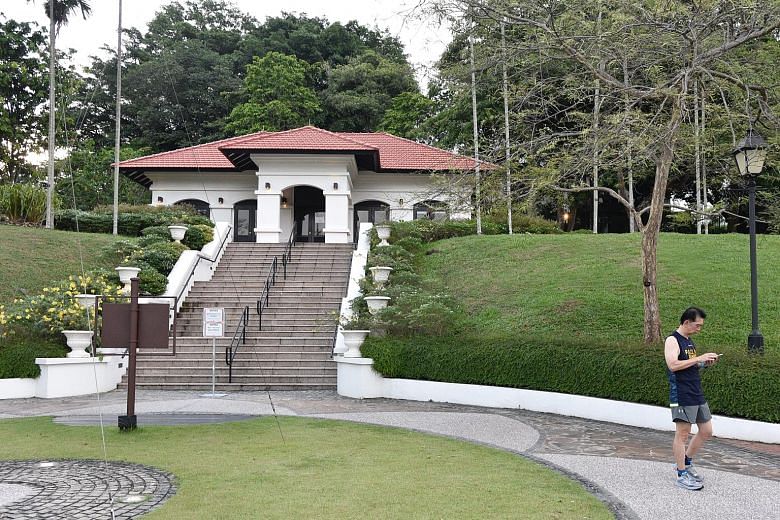
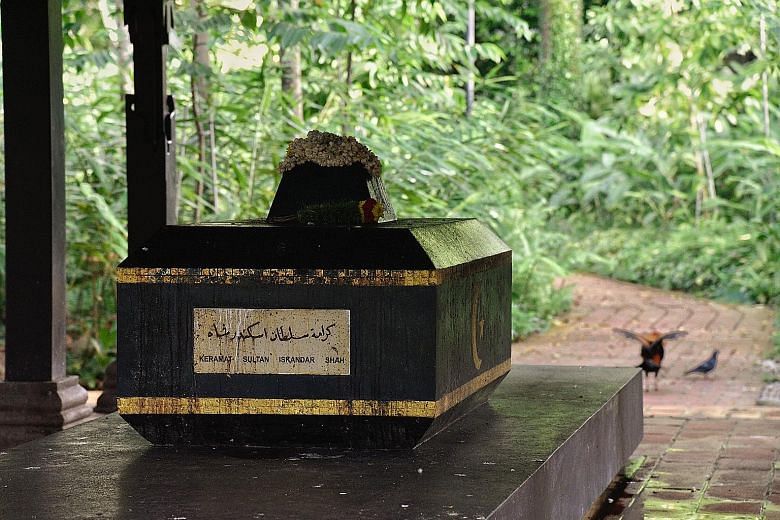
I am at the former Government House, a bungalow atop Fort Canning Hill, feeling sorry for Sir Stamford Raffles.
He who founded Singapore in 1819 features, inevitably, in a new heritage tour, Foibles In Leadership: A Hackatour Of The Greats In Singapore's Past.
The organisers, Journeys, a company that runs heritage tours, bills it as an alternative history of Singapore dating from the 14th century.
It is a bold claim I am not entirely convinced about. But when it comes to presenting a more nuanced understanding of history, compared with popular textbook narratives, the organisers nail it.
Raffles got some pushback last year under the glare of Singapore's bicentennial. Some commentators slammed the colonial agent as being more of an opportunistic oppressor than a visionary leader.
Revisionist readings of Raffles' role had existed before that, tilting the balance of historical credit towards Singapore's hardworking first Resident William Farquhar.
But this painstakingly researched heritage walk, which starts at Fort Canning Hill and takes in areas near National Gallery Singapore, shows me a different side of Raffles.
My guide, Journeys director Jeya Ayadurai, reads out a letter Raffles wrote to a friend after moving into the house on top of the hill, which was built in 1822.
In it, he has been suffering from headaches and his doctor advises that he might feel better if he moves to a higher altitude.
Even though fun-size Fort Canning Hill is hardly the salubrious Swiss Alps, which was stacked with sanatoriums in the 19th century, Raffles pronounces that he feels "a great difference" just two weeks after taking occupancy.
It may have been a forlornly valiant attempt to keep calm and carry on, but Raffles is haunted by death. Four of his five children died before the age of four in Bencoolen, where he is Lieutenant-Governor.
-
FOIBLES IN LEADERSHIP: A HACKATOUR OF THE GREATS IN SINGAPORE'S PAST
-
WHERE: From Fort Canning Hill
FEE: $58 an adult, $28 a child, subject to Covid-19 restrictions on group size
DURATION: At least two hours
INFO: journeys.com.sg/tosw
He wrote: "The tombs of the Malay kings, are, however, close at hand; and I have settled that if it is my fate to die here, I shall take my place amongst them."
The 14th-century kings of Singapore had a palace on the hill and one of them has a keramat, or shrine, named after him. Keramat Iskandar Shah is still found on Fort Canning Hill.
Raffles returns to England, where his wife finds him dead at home the day before his 45th birthday in 1826. This empire builder, who lived fast and died young, suffered a haemorrhage in his brain.
As my guide, Mr Ayadurai, 59, talks about Raffles, I find myself tucking in my knees and hugging them, seated on the steps that lead up to the former Government House. I feel like a child gathering with her fellows to hear his spellbinding stories.
Mr Ayadurai has another neat trick - he calls attention to details that may not loom large in historical accounts, but add greatly to the overall excitement.
We have walked down the hill near the former City Hall, now the National Gallery Singapore museum, where the official surrender of the Japanese during World War II was held on Sept 12, 1945.
The night before, Lord Louis Mountbatten, Supreme Allied Commander of South-east Asia, receives word that his Japanese counterpart, Hisaichi Terauchi, Supreme Commander of the Imperial Japanese Forces, Southern Region, has taken ill.
If I were Lord Mountbatten, I would think Terauchi was doing the skive of the century, and swear in Hokkien at the GP who gave him the MC.
Lord Mountbatten sends his own physician to Terauchi, who, indeed, has been felled by a stroke.
General Seishiro Itagaki takes his place the next day and the surrender marks the end of the Japanese Occupation in South-east Asia. As Nazi Germany had surrendered earlier in May that year, the war was truly over.
It is rare to get a sense of history as a suspenseful thriller. Count me in for the next cliffhanger heritage ride.
Join ST's Telegram channel and get the latest breaking news delivered to you.
A version of this article appeared in the print edition of The Sunday Times on September 27, 2020, with the headline Heritage trails in Singapore worth checking out. Subscribe

